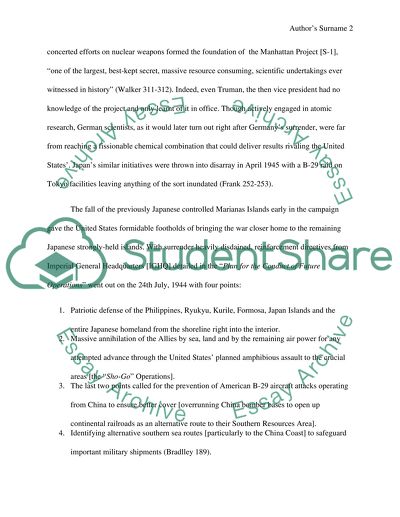Cite this document
(“Was the use of atomic bomb on japan justified Essay”, n.d.)
Retrieved from https://studentshare.org/english/1476406-was-the-use-of-atomic-bomb-on-japan-justified
Retrieved from https://studentshare.org/english/1476406-was-the-use-of-atomic-bomb-on-japan-justified
(Was the Use of Atomic Bomb on Japan Justified Essay)
https://studentshare.org/english/1476406-was-the-use-of-atomic-bomb-on-japan-justified.
https://studentshare.org/english/1476406-was-the-use-of-atomic-bomb-on-japan-justified.
“Was the Use of Atomic Bomb on Japan Justified Essay”, n.d. https://studentshare.org/english/1476406-was-the-use-of-atomic-bomb-on-japan-justified.


